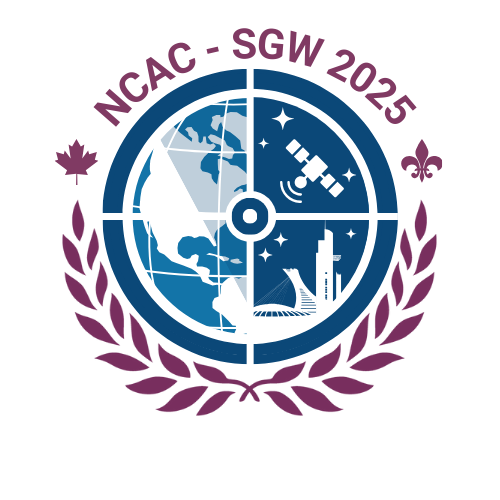Our Theme
Into the Mainstream
As space begins to enter the mainstream in our daily culture, the next generation will have to tackle problems ranging from regular launches interfering with air traffic patterns and increasingly congested orbits requiring space traffic management, to the lack of public excitement and therefore funding as trips to the Moon and Mars become more regular.
Simultaneously, the International Space Station, which has served as an anchor for space exploration, international collaboration, and commercial opportunities for the last 20 years, is reaching the end of its support cycle with increasing rhetoric of moving on to other projects. Once space becomes an even more obvious and ubiquitous part of our everyday lives, can we step beyond the engineering driven space exploration towards a more diverse group of occupations and nationalities in order to maintain a high level of sustainability in space?
Discussion Track 1: Innovative Influences of Space on Earth
Sponsored by the European GNSS Agency (GSA)
Moderated by Mr. Rodrigo da Costa, Galileo Services Programme Manager, European GNSS Agency (GSA)
Space is being infused more and more into our everyday culture. From clothing advertisements to art museum masterpieces, people are being exposed to “space culture.” In addition, space assets have been able to help people in crisis around the world – from assisting first responders after a natural disaster to monitoring the outbreak of a disease. Space is no longer an exclusive domain of engineers, scientists, and policy experts. First responders, humanitarian aid workers, artists, and educators are all finding creative ways to leverage space to support and drive their work. By viewing space from a new perspective, the space community might just find more creative solutions to the problems we face in space and on Earth.
As space enters the mainstream, our generation will get to utilize space assets in many new and innovative ways that will improve the lives of people around the world.
Questions for Discussion
- The first moon landing in 1969 captivated the world and inspired many people to become engineer and scientists. What do you think the next “moon landing” event will be? Do you think that event will have the same impact on the children of that generation as the moon landing did?
- How can the space community reach out and support people who are interested in contributing to space in non-traditional ways?
- In your opinion, what are some of the most impactful non-traditional uses of space assets? How can we improve on or expand on those successes?
- How will these new entrants to the space industry impact traditional stakeholders?
Discussion Track 2: Entrepreneurship in the Space Industry
Moderated by Ms. Taryn Tomlinson, Chief of Staff, Canadian Space Agency
Over the last few decades, there has been an explosion in new space or “NewSpace” startups. Their endeavors include launch vehicles, CubeSat constellations, space stations, asteroid mining, lunar delivery services, in-space manufacturing, and much more. As the cost of access to space decreases, there will be even more opportunities for more entrepreneurs to enter into the space arena. Small businesses have always been a key factor in terrestrial economics, but have struggled to expand off the planet without a major financial backer. Moving research, manufacturing, and even entire businesses to space will not only change the earth economy, but will also form the foundation for a space-based economy.
As space enters the mainstream, our generation will get to guide the role of small businesses and entrepreneurs will play in the new space economy.
Questions for Discussion
- What policies would be most beneficial to future space entrepreneurs as space becomes more mainstream.
- In what areas do you see the most opportunities for innovation? What areas do you see as oversaturated or becoming obsolete?
- How do you envision today’s NewSpace startups impacting traditional aerospace companies in the future? What can these two groups learn from each other?
Discussion Track 3: Space Tech and Innovation
Moderated by Mr. Steve Jurczyk, Associate Administrator, NASA Space Technology Mission Directorate
Space is often seen as cutting edge and full of new technologies. Yet, as many in the industry know, innovation and new technologies are often slow to make their way into actual space flight hardware. Most development times are so long, and the need for “reliability” so high, that the majority of technologies are at least 20 years old by the time they make it to space. Maturing new technologies to actual flight implementation is both expensive and time consuming, but many new technologies such as In-Situ Resource Utilization (ISRU), microgravity propellent transfer, nuclear thermal rockets, and many others, are seen as key components to a space economy.
As space enters the mainstream, our generation will decide what technologies get investments, as well as the policies that will guide, promote, or restrict innovation.
Questions for Discussion
- How do you view innovation in the space sector? How do you think it will change as technologies on earth develop? How will it change (or not) as more humans physically make the trip off Earth?
- Historically, technology and innovation have been pushed from the government to the private sector due to a government’s ability to take more financial risk.
- Will this trend continue? Or will space agencies begin adapting innovations from private industries?
- What steps should the United Nations Office for Outer Space Affairs (UNOOSA) and other international governing bodies take to prepare?
- What are the critical tech or policy areas that need to be addressed before space can truly enter the mainstream?
Discussion Track 4: Humans in Space
Moderated by Mr. Richard Hieb, Astronaut (Retired), NASA
Mankind has already set foot on the Moon but has failed to do so in a sustainable way. With the International Space Station, we now have 17 years of continuous human presence in space. Today, several companies are working on providing commercial human access to space for the very first time, which will lower the bar for international countries as well as private persons to access space. With regular missions to the Moon and Mars, hundreds to thousands of people will live and work in space in the near future. However, with humans pushing further into space, novel challenges will arise around the technology to help us get to these distant places, as well as the inevitable impacts on our biological bodies.
As space enters the mainstream, our generation will decide on the future path and speed of human space exploration and change the accessibility of space for everyone.
Questions for Discussion
- As plans for the ISS come to an end, what is the next human destination? Is it the Moon, Mars, a commercial microgravity platform, a deep space habitat or is it even a distributed network of destinations?
- How can we learn from the past and explore in a more sustainable way? How much risk are we willing to take for humans in space?
- How can we organize a large number of private space tourist or workers in space? What needs to be put in place that it doesn’t become a legal-free land?
- What will be the medical minimums for people to travel in space?
- How do we overcome the physical limitations for humans to explore space? To what degree will technology help us overcome biology?
Discussion Track 5: Space Science
Moderated by Dr. Jonathan Arenberg, Space Science Missions Chief Engineer, Space Center of Excellence, Northrop Grumman Aerospace Systems
Only recently have we transitioned from the buildup phase of the International Space Station to fully utilize it as a national laboratory. At the same time, new projects, such as the James Webb Telescope and the Mars 2020 Rover, are being built and will continue to expand our knowledge of the universe. Science disciplines range over a wide field of disciplines from astrophysics, earth science, and planetary sciences to heliophysics, astrobiology, and many others. Funding levels are usually constraint to governmental sources due to fundamental research and limited opportunities for immediate return of investment. Sharing data and equipment for spaceflight experiments with international collaborators could potentially be improved.
As space enters the mainstream, our generation will have to ensure that science is supported to lay the foundation for future innovations in space.
Questions for Discussion
- Can we still afford extravagant flagship missions, or would funding be better spent miniaturizing missions and increasing launch frequency? Would this allow the space industry to be more flexible and less risk averse?
- Where to next? The ISS facilitates microgravity research but cannot be used to study deep space radiation. Rovers are analyzing the surface of Mars but are not allowed to traverse high interest regions due to planetary protection. What are the most important science locations for the near future?
- The first suborbital launch providers are allowing principal investigators to fly with their experiments. Will this change how we perform remote research in space today? How can we symbiotically use humans and robots to make experiments, data, and sample collection more efficient?
Discussion Track 6: National Security in International Space
Sponsored by Secure World Foundation
Moderated by Dr. Peter Hays, Adjunct Professor of Space Policy and International Affairs, George Washington University (GWU) Space Policy Institute and Senior Space Policy Analyst, Falcon Research
Throughout the world, there is increased recognition of, and focus on, the ubiquitous contributions that space capabilities make to global prosperity and security. Space plays a critical and sometimes unknown role in our daily lives. With no borders in outer space, major space actors have to manage the inherently global nature of the space environment diplomatically while protecting their critical assets and capabilities. In Earth orbit, commercial, civil, and military actors are competing for limited resources like spectrum and orbital slots; new nations are entering space; others are formally incorporating the domain into their militaries.
As space enters the mainstream, our generation will help determine the correct balance between diplomacy and national security.
Questions for Discussion
- What trends are driving instability and tensions in space?
- What are the national policies and international mechanisms could help reduce tensions and increase stability?
- In which ways would it be beneficial to national security for countries to be more transparent about their space activities? What are some of the inhibitors to this?
- What recommendations can the space generation make to governments regarding future actions to increase stability in space?


